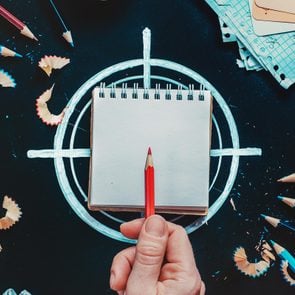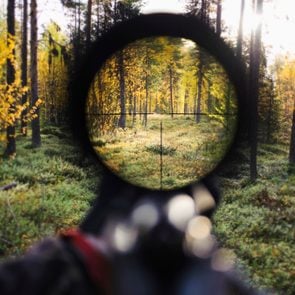I Got Shot in a Place That Loves Guns, and I Still Can’t Bring Myself to Hate Guns
Updated: Feb. 14, 2023
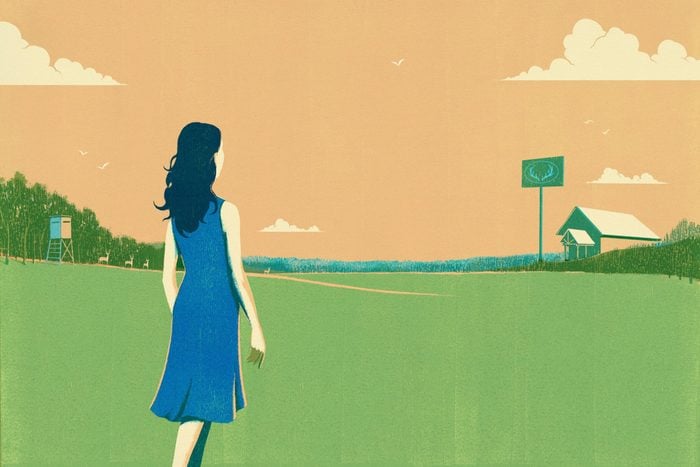
One Alabama woman’s experience—as both an observer and a shooting victim—underscores how hungry Americans are to reach consensus.
I was shot on a Sunday. It was late and it was hot and I was 21, on my way home from dinner during summer break. I’d rolled down the windows because the breeze felt good. I pulled up to a red light, about half a mile from my home in Tuscaloosa, Alabama. “Yeah!” by Usher was playing on the radio. A silver Toyota Tacoma turned the corner. As it passed me, I heard a pop. Then my left arm was on fire.
It never occurred to me to call 911, only to want my dad. I pulled into the Circle K across the street to call him. I looked at the blood blooming across my blue dress. The dress was new, and I wondered whether the stain would come out. Then I looked over at a girl standing in the parking lot, talking with two boys. Her wavy blond hair shimmered beneath the fluorescent streetlights. I thought about how I wished I had wavy blond hair like hers.
My dad said to stay put, that he’d come get me. I insisted on driving home. On the way, I apologized to God for the things I’d done wrong in life. When I pulled into the driveway, my parents were standing outside.
My mother cried as she drove me to the hospital. The surgeon said the bullet was small, maybe a .22 caliber, and too deep in the muscle to take out, so it’s still in my arm. They never caught the shooter or came up with a motive.
Where I’m from, we like guns. They are as much a part of our story as Jesus, “Roll Tide,” and monograms. Even if you’ve never shot one, you appreciate the romance.
That appreciation begins when you’re young. Here is what I remember: November air, stadium lights, cut grass. We cheerleaders would stay after school to practice our halftime routine. On Friday nights, we’d crowd in front of the small bathroom mirrors to touch up our makeup—glitter eyeshadow if it was a big game—and emerge in a fog of hair spray.
The cheerleaders who were most envied were the ones who had their alarm clock set for 4 a.m. the next day. It meant they had a boyfriend who was taking them hunting, and that meant things were getting serious.
Not every girl was excited about the hunting itself. The gear was bulky and heavy: rubber boots and a big camo jacket, which, if you were lucky and had a brother, you could just borrow. The boy would pick you up in his truck and drive you out to his family’s land. You’d climb into the deer stand and wait. The boy would have his rifle ready—maybe a .30-06, a youth model that didn’t kick too hard—and when his prey finally emerged, he’d squeeze the trigger, and you’d jump because the sound cracked open the sky. A few horribly boring hours for you, but when his face flushed with delight, you’d remember why you came—because it was important to him, which meant it was important to you too.
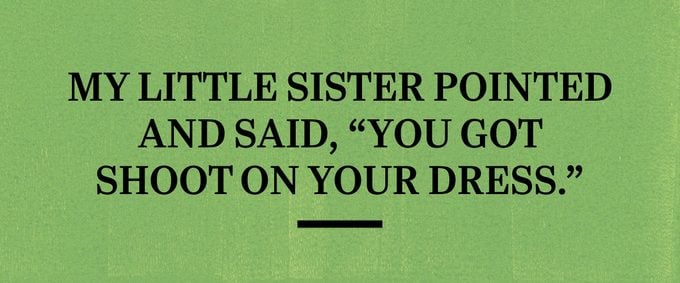
Those mornings weren’t about guns so much as they were about growing up, the pride of inclusion in a culture, the proximity to a masculine energy we all found intoxicating. If people in Tuscaloosa talked about gun violence at all—in the wake of a mass shooting, or after the rare hunting accident—it was as an unfortunate but explicable bit of collateral damage: Occasionally cars hit people, but we still drive.
When I was 14, my grandfather became a co-owner of an outdoors store. The store carried everything—firearms, fishing equipment, hiking and camping gear. After I got shot, after I was able to sleep on my left side again, I started thinking about the gun section at the back of the store. Did the person who shot me buy the weapon there? How long did the sale take? I pictured him—he is faceless in my mind, but always a man—selecting a gun, and then tossing in a pack of chewing gum, because it was right there by the cash register, and why not.
Probably I had parroted the unfortunate-but-justifiable-collateral bit before. That logic became muddied, though, when the collateral damage was me. But nobody talked about it like that, at least not out loud. So for a while, neither did I.
Getting shot did not end my life. It didn’t even upend it, really. The one time I cried, I was sitting in a tufted chair in my parents’ bedroom while the local Fox affiliate was on. “The victim,” the anchor said, “is still rattled but at home and doing fine, we can exclusively report.” It was disembodying, listening to this person I had never spoken with speak about me. We can exclusively report.
Each time I replayed that night in my mind, a different image would surface. My four-year-old sister, in the driveway when I pulled in. When I got out, she saw the deep-red side of my dress, the bloodstain like a Rorschach pattern. She pointed at it and calmly said, “You got shoot on your dress.” At the hospital, a nurse at the emergency room desk looked up from her phone and said, expressionless, “We’ve got a gunshot wound.”
These were not the details the police wanted me to remember. Like detectives on a TV show, they asked me to close my eyes and relive the drive. The way the air smelled, the sound of the other cars. But I could not conjure the missing fact that would give meaning to all the others. (A beer can clattering across the street—for some reason, they seemed to think I might have heard a beer can clattering across the street.)
I traveled the next week to France for a writing class. The bullet did not—does not—set off metal detectors, but I carried a letter about it from the sheriff, just in case. In the fall, I went back to college in New England, where the story of the lead inside my arm was just that: a story. But like the ugliest white noise, it was always there with me, defiant and relentless. After late nights at the library, I’d call the campus police, wary of the three stoplights I had to pass on my way home. I’d ask the woman who usually worked at that hour to stay on the line with me while I walked.
Sometimes a friend would ask whether my feelings on gun rights had changed. I usually said “I don’t know,” and that was true. Knee-jerk calls for gun control didn’t resonate with me. Yet a reverence toward guns no longer felt right either.
I found my ambivalence unsettling. Everyone else seemed so sure about how to feel about guns—people on campus, on the Internet, back home. Unlike most of them, I had made intimate acquaintance with gun violence. I should have had some special insight. If what had happened to me wasn’t fodder for clarity, I feared nothing ever would be.
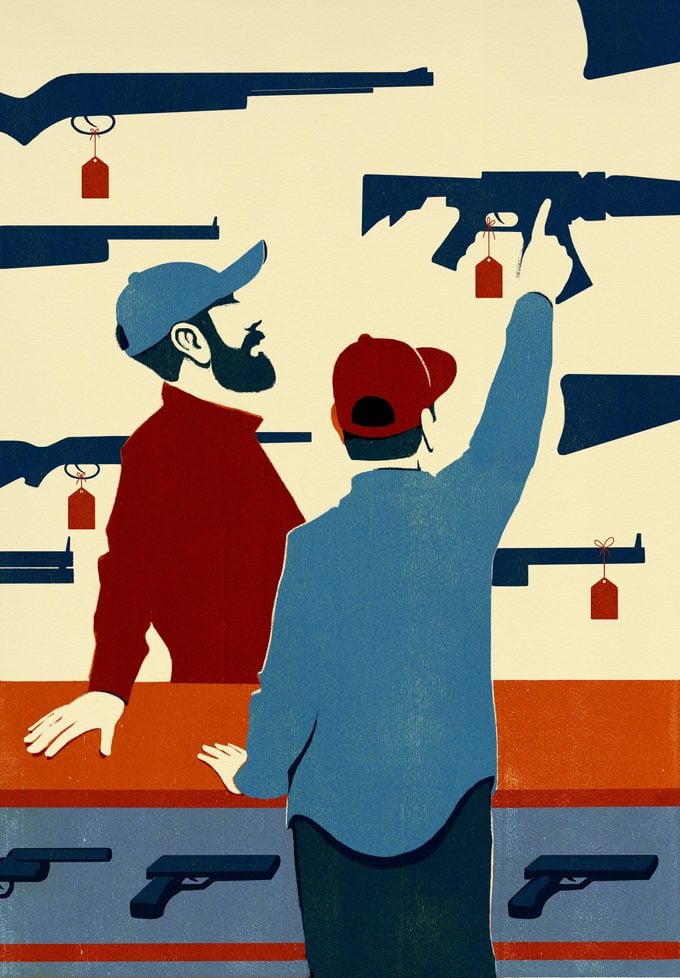
In February 2018, a few days after 34 high school students and faculty were gunned down, 17 fatally, in Parkland, Florida, my grandfather called me in Washington, DC, where I now work as a congressional reporter. He wanted to talk about what had happened.
We’d never discussed gun control before. After I got shot, we talked about me. We talked about the reporters and TV trucks parked outside my dad’s office. We talked about the dead-end police investigation. Never, though, about the gun.
After Parkland, we did. My grandfather said that “something” had to be done about “all this,” and it didn’t look like “anyone up there”—meaning Washington—was “going to do a damned thing about it.” I could picture his brow furrowed, his head shaking.
He said that when he’d learned the killer in Parkland had used an AR-15-style semiautomatic rifle, he’d asked one of his store’s managers to call the Bureau of Alcohol, Tobacco, Firearms and Explosives to find out whether the store could stop selling those types of weapons to people under the age of 21. The woman there said it could—it was a private business—but it would risk age-discrimination lawsuits. My grandfather told me he didn’t care much about that risk, so he’d ordered the change.
He’d also considered pulling AR-15s from the shelves altogether, but first he’d had his employees look into who regularly buys them. Turns out most customers are landowners and farmers with a wild-hog issue. The pigs barrel onto their property, digging up roots and acorns and generally tearing up the ground, making it difficult to run equipment over the land. Because the animals often travel in herds, a semiautomatic rifle is a particularly efficient means of stopping them. For that reason, my grandfather said, he’d continue to sell the gun.
We talked about how hiking the age for AR-15 purchases was unlikely to stop the next Parkland. Still, it felt good to do something, anything. The problem was a complicated one, he said, and the only thing most politicians seemed able to do was serve up broad-stroke talking points, or say nothing at all.
On Capitol Hill, I’d watched up close as apathy had settled in after earlier shootings. I could predict the responses of each party’s leaders. I could recite the thoughts and prayers, all of which had begun to feel like a mockery of God, of the brains he’d given us to figure this out. I found myself thinking of 1 Peter 4:10: “Each of you should use whatever gift you have received to serve others, as faithful stewards of God’s grace in its various forms.”
If my grandfather, a middle-of-the-road Republican who’d voted for Donald Trump, could see the many grays of this very American problem, I thought, why couldn’t Washington?
Soon after our talk, I went home for a visit. My grandfather picked me up from my parents’ house. As we drove, I told him I was writing an article about what it was like getting shot in a place that loves guns.
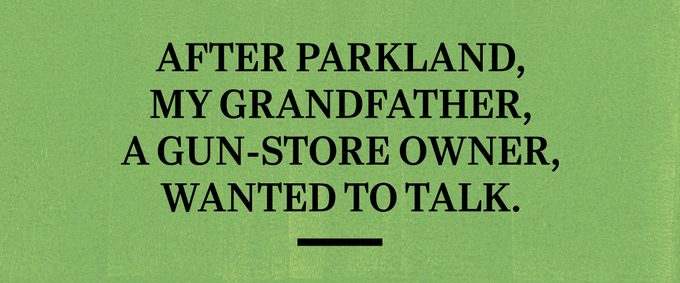
“It’s not love,” he said. We pulled into the parking lot of his store, which sits high on a hill. You can see almost all of Tuscaloosa from there. “It’s about necessity.” He mentioned rattlesnakes and coyotes. For people in rural areas—that’s more than 40 percent of Alabamians—guns are still a day-to-day defense against such animals. Yes, there is ample love for guns in Alabama. But to forget that they’re tools is to miss an important point.
We walked into the store. It smelled like pine. In the back-left corner was the gun room, its name announced in tall brown letters beneath a taxidermied leopard. For the next few hours, I watched employees handle firearms with care bordering on devotion. They spoke with pride, and I could see how expertise on something so complicated, so controversial—so lethal—might feel gratifying.
Reid Duvall, a tall 20-something with sandy-colored hair, was at the counter that morning. Back in Washington, I’d spent months talking with Republican lawmakers who bristled at the notion of “commonsense solutions” to gun violence. Proposed gun-control measures reflected anything but common sense, they told me. Moreover, the National Rifle Association was stridently against them, on the grounds that almost any concession would undermine the Second Amendment. But Duvall, who described himself as “very pro–Second Amendment,” seemed to suggest that this argument was insincere. “It just makes sense, stuff like age restrictions,” he told me. “There’s a certain maturity level required for guns in general, and especially with something like [an AR-15]. Some people probably shouldn’t have them.”
It occurred to me that guys like Duvall and the others at the counter had had their voices hijacked by people like Kaitlin Bennett. She marked her graduation from Kent State University in 2018 with a photo of herself shouldering an AR-10 and holding her cap, which she’d decorated with the words “Come and take it.” The photo went viral, and now Bennett posts incendiary tweets designed to elicit “liberal tears.”
That the broader population has transferred the attitudes of people like Bennett onto most gun owners is understandable. Popular discourse is given to extremes. But gun owners’ representatives—ostensibly sent to Washington to cut through the morass—appear guilty of the same. In all the times I’ve talked with GOP lawmakers about guns, why have they never mentioned that age restrictions are, for many conservative voters, a worthwhile starting point? Better question: Do they even know?
“I don’t know,” said another employee, Morgan Pate. “It’s not like they ask us.”
I hated what had happened to me, and I hated what had happened to the children in Parkland. I wanted to hate guns too. That’s how I thought a good person should feel. I’d recatalogued my ambivalence from unsettling to irresponsible, even immoral. And yet it remained.
Two nights after visiting the store, I went shooting with an old friend I’ll call Tyler. I’d reached out to him in the hopes that he could help me remember things about hunting, about home, that I’d forgotten. We stopped by his house to pick up his Labrador and some beer, then headed to some land he owned about 45 minutes outside of town to kill some hogs.
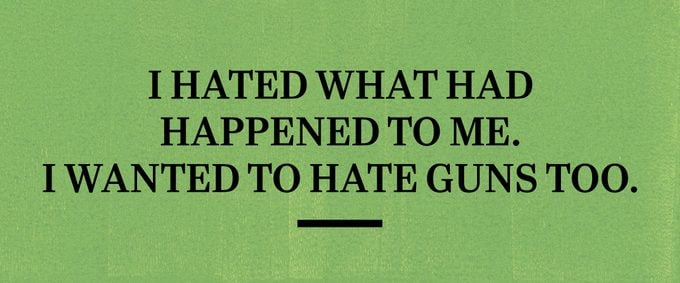
When we got to his cabin, the alarm was blaring. At first, we wondered whether there’d been a break-in. Not that there would have been much to take, apart from a television with rabbit ears. Still, it felt good to walk in with someone who was armed. Tyler looked around, holding his AR-15 over his shoulder. All clear. He grabbed boots and wool socks from a closet. I pulled them on, and we doused ourselves in bug spray.
We walked back outside to unload the trunk. Tyler fired three shots into the sky. Pop pop pop.
I jumped backward, shielding my face with my forearms. I yelled his name. He laughed. “What?”
I held myself in that space just before tears, where your cheeks warm and pressure builds in the back of your throat. I hadn’t expected to be scared.
We climbed into an all-terrain vehicle and snaked it through the woods into an open field. Here we were, surrounded by miles of tall grass. Power lines dissolved into the horizon on either side. The sky was lavender.
The plan now was to wait. As minutes bled into hours, we were comfortable in the ATV, talking about our ten-year plans—I didn’t have one; he thought that was risky—the gun and the Labrador resting between us. Any anxiety I’d felt earlier was gone.
I don’t buy into the idea that regular people are more sensible, intrinsically, than creatures of DC. But they are certainly more complicated than their leaders care to admit. Lawmakers of both parties are alienating reasonable and responsible gun owners out of deference to extremists. Acknowledging the ambiguities, the gray areas, of American attitudes toward guns—all the things that could make a gun-violence victim want to go shooting or a firearms dealer decide to regulate his own shop—won’t solve this problem or single-handedly stem gun deaths. But continuing to see things in the current terms pretty much guarantees that we’ll get nowhere.
As my evening with Tyler wore on, no hogs appeared. But I wanted to shoot the AR-15, so Tyler proposed target practice. He walked out into the field and balanced empty cans one on top of another.
I nestled the stock into my shoulder and steadied the red dot on the top can. I pulled the trigger. The can exploded into the air, a blue blur. A piercing ring followed and made the rest of the world seem still. I caught the metallic scent of gunpowder. “The best smell in the whole wide world,” Tyler said.
I snapped on the safety, and he restacked the cans so I could go again. The same deafening pops that had almost sent me spiraling a few hours earlier now set loose a sweet dose of adrenaline. I was happy. I didn’t want to be.
